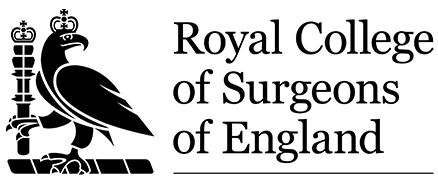Do you gasp when you look at old photographs and notice the difference in your hairline? If you answered yes, then you could have either a receding or maturing hairline. But don’t stress, we’re going to discuss ways of monitoring hair loss and confirming whether you have receding hairline, and what you can do about it.
Is your hairline changing?
A little hair loss is normal and doesn’t mean you have a receding hairline or that you’re going bald. The best way to assess what your hairline is doing is to take a long, hard look in the mirror and see if you can spot any changes.
If you’re convinced that you’re losing hair and your hairline is changing, start taking selfies every few months. You can use these photos as a guide to determine if there are changes and if you have a slowly receding or rapidly receding hairline. You can also take these images to a surgeon or specialist who does hair transplants and follicle implants to show them where you’re losing the most hair, and how you’d like to restore it.
Understanding mature vs. receding hairlines
If you’re worried about your hairline, then it’s a good idea to know the differences between a mature hairline and a receding one. They are different and can affect the type of treatment plan you choose.
Mature hairline: Typically, a maturing hairline recedes (or moves back) evenly or uniformly, with the benchmark measurement being about an inch above the top of the forehead crease.
Receding hairline: If the whole hairline recedes further back on the scalp, ending with a widow’s peak or a M-shape, hair loss specialists distinguish this as a receding hairline.
Both are uncommon in women. The female gender is more likely to experience thinning hair all over their scalp. This can be due to menopause and diminishing hormones and is known as androgenetic alopecia. But the condition can occur in males and is called male pattern baldness, which displays as thinning hair at the crown and a receding hairline.
Spotting the signs of a receding hairline
Early signs of a receding hairline can show long before the hairline itself changes. These are five you need to look out for:
1. Thinning Hair
Thinning hair as you age is natural, but you may notice more marked. thinning around your temples and on the crown of your head. This could be due to hereditary genetics or you’re either suffering from stress or an underlying medical condition. This doesn’t mean that you go bald by the time you are 50. Think about your family hair loss, history and lifestyle factors. If you’re still worried, then it’s best to consult your medical practitioner.
Receding hairlines and hair loss are very common. Some experts estimate that 40% of women and a third of men aged over 25 struggle with hair loss. As hair loss generally increases over time, these percentages rise to 70% prevalence in men aged 70 or over. As many as 39% of UK men lose their hair altogether.
2. Hereditary receding hairlines
Was your father, an uncle or grandfather bald or balding? Your genetic makeup will predispose you to a
receding hairline if there’s such a trait in your family. Receding hairlines can often start very young, or in
most cases, appear as you age.
In women, receding hairlines often occur with menopausal changes. There’s arguably more of a stigma attached to receding and thinning hair in women, as their hair is so tied-in with their notions of allure and identity. Most women are hard-wired to place great store in their hair and its grooming. Receding hairlines and very thin hair is less socially acceptable in women than it is in men.
If you suspect or believe there are other reasons for your hair loss and subsequent receding hairline, you should always consult a medical professional.
3. Hair falling out in clumps
We all lose up to 100 hair strands daily and there is such a thing as seasonal hair fall, but hair should never fall out in clumps. If major hair loss is accompanied by noticeable bare patches and bald spots, then again, consult a doctor.
Even though male pattern baldness is hereditary and impossible to prevent, visiting your GP or consulting a hair loss clinic is the next step.
4. Bald spots
Bald spots may be a sign of alopecia in which the body attacks the hair follicles. An unmistakable sign of alopecia is if the bare or bald patches are circular in shape. As alopecia is an autoimmune disorder, it can affect your facial and body hair.
Depending on the type of alopecia, the hair may regrow, or your hair loss could end up being permanent.
5. Hair loss all over the body
Many medical conditions can cause hair loss over the entire body. These include alopecia universalis, autoimmune disorders, a thyroid condition, polycystic ovary syndrome (PCOS), an iron deficiency, adrenal gland disorder, diabetes, stress, or hereditary hair loss.
Again, a medical professional can perform tests and get to the bottom of your hair loss.
Many famous personalities in the entertainment industry have embraced their characteristic receding hairlines. Bruce Willis, The Rock, Flea from The Red Hot Chilli Peppers and Sting have all opted to embrace the look and let nature take its course. Often, these men are considered attractive and sexy, despite—or even because of—their receding hairlines or bald heads.



